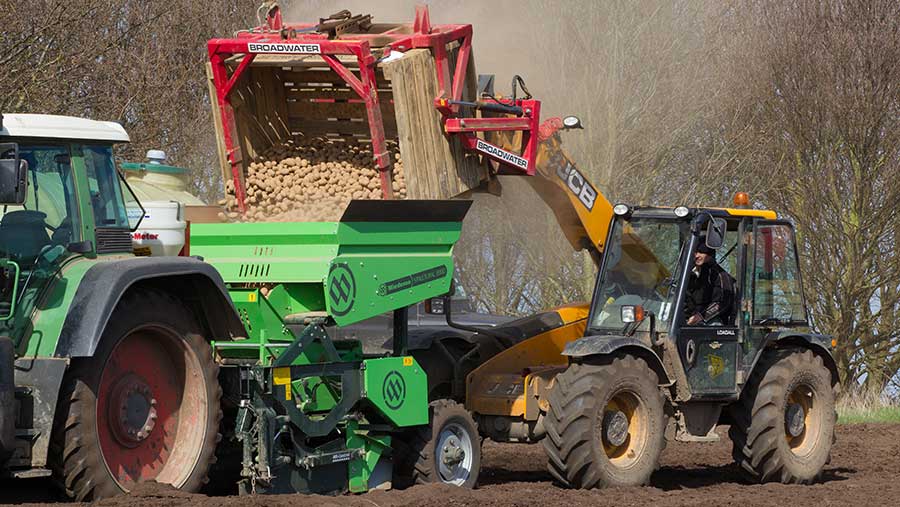Spud Watch: How to take care of seed potatoes
 © Tim Scrivener
© Tim Scrivener At the time of writing I am wandering the potato fields of New Zealand’s Canterbury Plains, in temperatures of 30C-plus, on a working holiday.
Good soils, ample water, a long growing season and lots of sunshine help push average yields here to 80-90t/ha.
Of course, there are problems too – soil-borne rhizoctonia and powdery scab are rife and seed quality, particularly of cut seed, can be variable. Deal with these issues and I have no doubt that 100t/ha could become the norm.
See also: Video: Cultivating potato tramlines cuts soil and water losses
One observation I have made is that there seems to be fewer problems with soil-borne pathogens when the green bridge is removed.
Most farmers in this part of NZ want a crop of some sort in the ground all year, so grass or kale may be planted and stocked with sheep over winter, others leave fields as bare fallow until planting with potatoes.
There seems to be much less rhizoctonia and root galls from powdery scab following a bare fallow.
The curse of the overwinter stubble scheme comes to mind – allowing natural regeneration of every weed and potato volunteer, unhindered, cannot be good for the following potato crop.
Closer to home
Far too soon my attention will be focused on things closer to home and the new season.
Early growers in Cheshire have seed in chitting trays already. Seed quality is generally good from what I have seen so far, although I am hearing yields have been very variable and supply of some varieties might be tight.
There will be more cut seed of some processing varieties too, this will need to be managed carefully once on farm, particularly if not planted straight away. Once cut, all it wants to do is grow.
I have found that even if the cut seed piece is covered with lime, an application of Monceren DS (pencycuron) or Rhino DS (flutolanil) can help reduce issues with rhizoctonia.
Seed management
- On delivery check labels/delivery notes
- Open three random bags (10% of a full load) to check quality (take pictures and notify seed supplier if any initial concerns)
- Unload lorry carefully, avoiding any bumps and bangs, and place in an airy, frost-free environment, preferably on pallets, leaving space between the bags
- Decant into boxes and report any further concerns to seed supplier within 48 hours of delivery
- Aim to remove any condensation, keep as dry and cool as possible until planting
- Wash a sample and assess need for further seed treatments
- Carry out a number of tuber counts to enable accurate planting of desired plant populations
- Always plant cool seed into warm soil

